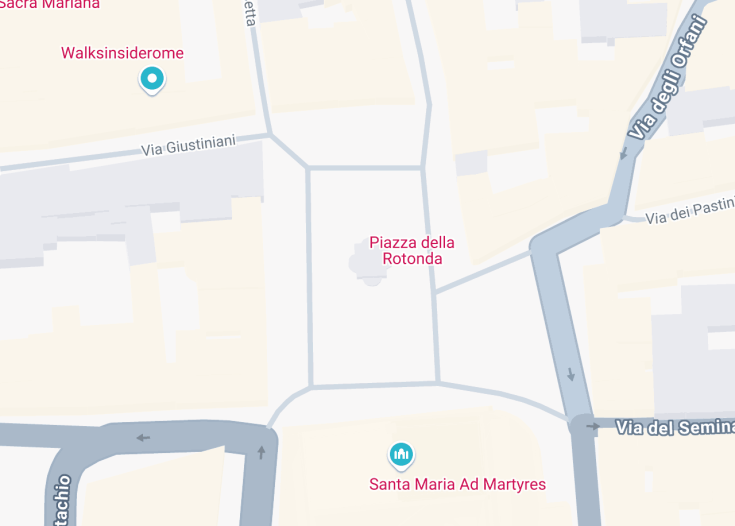The Macuteo Obelisk, also known as the Pantheon obelisk, is an iconic Egyptian monument located in Piazza della Rotonda in Rome, Italy. Standing at a height of 14.52 meters including its base, this ancient relic embodies the grandeur of Roman antiquity and its intricate connection to Egyptian culture.
When visiting the Pantheon obelisk, consider arriving early in the morning or late in the afternoon to avoid the crowds. This will provide an opportunity to fully appreciate the intricate details of the monument and its surrounding fountain.
For those planning a visit, take the time to explore the nearby Pantheon, which is less than a minute’s walk away. This architectural marvel, combined with the majestic obelisk, creates an unforgettable Roman experience steeped in history.
“Macuteo” Pantheon obelisk at piazza della Rotonda: A Touch of Ancient Egypt in Rome
The “Macuteo” Pantheon obelisk stands proudly in Piazza della Rotonda, directly in front of the magnificent Pantheon. This ancient Egyptian obelisk, measuring 6.34 meters tall (14.52 meters when including its base), is not only a remarkable artifact but also a testament to the city’s rich history. Originally erected in the sanctuary of Isis during the reign of Emperor Domitian, the obelisk features the name cartouches of Pharaoh Ramses II, linking this monument to a grand past. The stylish Baroque fountain that enhances its splendor was commissioned by Pope Clement XI in 1711, further embedding the obelisk into the cultural fabric of Rome. Tourists flock to this spot not just to admire its artistry, but also to soak in the stunning views of the surrounding Pantheon and the vibrant atmosphere of the bustling piazza. The obelisk ultimately stands as a remarkable example of how ancient Egyptian architecture has become intertwined with Roman history.
What to See at the “Macuteo” Pantheon Obelisk in Rome
Visitors to the “Macuteo” Pantheon obelisk will discover numerous attractions nearby, making it a perfect spot to explore.
Nearby Attractions
Among these are the stunning Pantheon itself, where the grand dome and oculus captivate the imagination. The vibrant atmosphere of Piazza della Rotonda offers numerous cafés and gelato shops, perfect for a refreshing break. Additionally, other historic sites are just a short walk away, making this area a significant cultural hub. Whether you wish to delve into Roman history or simply take a moment to reflect to the rhythmic sounds of the square, the obelisk serves as a key focal point in your journey through Rome.
A Notable Fact About the “Macuteo” Pantheon Obelisk
An interesting fact about the “Macuteo” Pantheon obelisk is that it was originally excavated in either 1373 or 1575 and spent some time in the Piazza di San Macuto before being relocated to its current site in front of the Pantheon. This obelisk, along with another nearby obelisk at Villa Celimontana, once stood in the ancient sanctuary of Amun-Re in Heliopolis, Egypt, showcasing the long journey and transformation of these relics through history. Such connections add layers of depth to the stories that visitors experience while standing before the impressive structure.
Visit the Majestic “Macuteo” Pantheon Obelisk at Piazza della Rotonda in Rome, Italy
The Macuteo Pantheon Obelisk, an Egyptian masterpiece, stands proudly in front of the Pantheon, offering visitors a captivating glimpse into ancient artistry and history. Towering at a height of 6.34 meters, this magnificent obelisk is a significant remnant of Rome’s imperial past, adorned with cartouches of the Pharaoh Ramses II. It once graced the sanctuary of Isis during Empire Domitian’s reign, making it a must-visit historical landmark for anyone intrigued by ancient cultures and monumental architecture.
Visitors to this iconic site can expect a rich tapestry of sights—from the intricately designed fountain, which incorporates the obelisk, to the awe-inspiring structure of the Pantheon itself. The area is livelier than ever, brimming with tourists, street performers, and nearby cafes offering authentic Italian cuisine, making it suitable for families, history buffs, and casual tourists alike.
As part of a broader itinerary, a visit to the Macuteo obelisk can easily be included in a day exploring other historical sites like the Trevi Fountain, the Spanish Steps, and Piazza Navona. Not only does the obelisk serve as a stunning focal point, but it also invites visitors to linger, capture memorable photographs, and enjoy the vibrant atmosphere of this bustling square.
Unique Tip: Early mornings or late afternoons provide the best light for photography and a quieter experience, allowing you to truly appreciate the monument’s grandeur without the crowds.
The Best Time to Visit the “Macuteo” Pantheon Obelisk at Piazza della Rotonda in Rome, Italy
For those planning a visit, the ideal times are during the spring and fall months, when the weather in Rome is typically mild and pleasant, enhancing your experience as you explore the site. The obelisk shines against a bright blue sky, and the surrounding ambiance is both inviting and relaxing.
Recurring Events and Best Opportunities to Visit
One standout opportunity for visiting the Macuteo Pantheon Obelisk occurs during the Rome Summer Festival, where various events, performances, and cultural activities are held in the area. This vibrant atmosphere adds an extra layer of excitement to your visit.
Accessibility and Limitations
While the Macuteo Pantheon Obelisk is accessible to the public, there are some limitations to be aware of. Being located in a busy square, it may become crowded, potentially making it difficult for some visitors to fully appreciate the monument at peak times.
Accessibility
Limitations
- Limited seating available around the fountain.
- No climbing or touching of the obelisk is permitted.
- Restrictions on large bags or backpacks for security reasons.
Notes to visitors
- Best visited during weekdays to avoid larger crowds.
- Photography is encouraged; however, please be considerate to other visitors.
- Keep an eye on personal belongings, as the area can be busy with tourists.
General Information
Details for your visit to the “Macuteo” Pantheon Obelisk at Piazza della Rotonda
Location
The Macuteo Pantheon Obelisk is conveniently located in a bustling square surrounded by notable landmarks, making it easy to incorporate into your Rome itinerary. Not far from the Trevi Fountain and Piazza Navona, it’s well-placed in the heart of the city.
Address:
Piazza della Rotonda, 00186 Roma RM, ItalyVisiting Information
The Pantheon obelisk is open for public viewing at all hours, allowing visitors to enjoy its majestic presence at any time of day. For a tranquil experience, early morning visits are recommended when the light is soft and the crowds are thinner, making it easier to soak in the historical significance of this ancient monument.
How to Reach the “Macuteo” Pantheon Obelisk at Piazza della Rotonda in Rome
Car
The Macuteo Pantheon Obelisk is easily reachable by car, with several parking facilities available nearby for a nominal fee.
| Route | Distance | Travel time |
|---|---|---|
| From Termini Station | 2.5 miles (4 km) | 10 minutes |
| From Vatican City | 2 miles (3.2 km) | 15 minutes |
| From Trastevere | 2.2 miles (3.5 km) | 12 minutes |
Public Transport
The obelisk is also well-served by public transport options, including buses and trams, making it a highly accessible location in central Rome.
Nearby Attractions
- Trevi Fountain – 700 meters (0.4 miles)
- Spanish Steps – 1.1 kilometers (0.7 miles)
- Piazza Navona – 1 kilometer (0.6 miles)
- Pantheon – 150 meters (0.1 miles)
- Castel Sant’Angelo – 1.5 kilometers (0.9 miles)
- Campo de’ Fiori – 1.2 kilometers (0.75 miles)
- Borghese Gallery – 2 kilometers (1.2 miles)
- Roman Forum – 1.5 kilometers (0.9 miles)
- Colosseum – 2 kilometers (1.2 miles)
- Gianicolo Hill – 2.5 kilometers (1.6 miles)
- Piazza Venezia – 800 meters (0.5 miles)
- Santa Maria in Trastevere – 2.7 kilometers (1.7 miles)
Common Questions
What is the historical significance of the Macuteo obelisk at the Pantheon?
The Macuteo obelisk, located in front of the Pantheon in Piazza della Rotonda, holds significant historical value as it dates back to the time of Pharaoh Ramses II, who reigned from 1279 to 1213 BC. This ancient monument originally stood in Emperor Domitian’s sanctuary of Isis, reflecting the Romans’ fascination with Egyptian culture during the Imperial period. Its inscribed name cartouches bear witness to its origins in Heliopolis, underscoring the obelisk’s connection to ancient Egyptian religious practices. Today, it serves as a monument to Rome’s diverse history and the evolution of cultural heritage from antiquity to the present.
How does the Macuteo obelisk compare to other Roman obelisks?
The Macuteo obelisk is one of 13 ancient obelisks that remain in Rome, each varying in height, design, and historical background. Measuring 6.34 meters tall (or 14.52 meters, including its base), it is one of the taller examples, yet it is not the most prominent; the Vatican’s St. Peter’s obelisk is the tallest in the city. Unlike some other obelisks which were erected in the Pharaonic period and remain largely intact, the Macuteo obelisk was re-erected during the Baroque period in 1711 by Pope Clement XI, enhancing its narrative with a fountain that adds to the aesthetic of Piazza della Rotonda. The obelisk’s pairing with the adjacent Obelisco Matteiano at the Villa Celimontana further illustrates the cultural exchange and influence between ancient Egypt and Roman traditions.
What decorative features are present at the base of the Macuteo obelisk?
The base of the Macuteo obelisk features a richly designed late Baroque fountain, which was added by Pope Clement XI in 1711. This fountain is not only ornamentally significant but also serves a functional purpose, adding beauty and refreshment to the square. At the base of the obelisk, you can find intricate sculptures and shapes that complement the monolith’s grandeur. The inscription on the base documents the papal initiative and reflects the artistic styles prevalent during that era, making the entire setting a captivating tableau that tells the story of artistic and architectural advancement in Rome.
Can you share details about the architectural style of the fountain near the Macuteo obelisk?
The fountain that adorns the Macuteo obelisk is designed in the late Baroque style, characterized by its elaborate and dynamic forms. This architectural period, which flourished in the 17th and 18th centuries, emphasizes grandeur and ornamental detail, aiming to evoke emotion and movement. The fountain features flowing lines and decorative elements that harmonize beautifully with the ancient obelisk it supports. Its design provides a stark contrast between the ancient Egyptian aesthetic of the obelisk and the exuberant artistic tendencies of Baroque Rome. Visitors can appreciate this blend of old and new as they observe the details of the fountain, which enhances the overall visual experience in Piazza della Rotonda.
What archaeological techniques were used to excavate the Macuteo obelisk?
The excavation of the Macuteo obelisk, believed to have occurred either in 1373 or 1575, involved techniques that were primarily historical rather than modern archaeological methods. During this time, the process of locating, uncovering, and transporting ancient artifacts relied heavily on manual labor, rudimentary tools, and a keen knowledge of historical records. Maps and oral histories likely guided workers to the site of the obelisk. Once located, it would have taken considerable effort to remove dirt and other debris, revealing the monument. The significance of this excavation lay in its contribution to understanding and preserving Rome’s ancient history, even if less is known about the specific methods used during those early excavations.

Is the “Macuteo” Pantheon obelisk at Piazza della Rotonda in Rome worth visiting?
Absolutely! The Pantheon obelisk, also known as the Macuteo, offers visitors a glimpse into ancient history with its roots leading back to Pharaoh Ramses II. Standing at 6.34 m tall, this stunning obelisk is not only an architectural marvel but also a vital piece of Rome’s ancient Egyptian collection. Situated directly in front of the magnificent Pantheon, it enhances the beauty of the historic piazza. When visiting this site, tourists can appreciate both the tranquility of the fountain and the artistry of the obelisk, which dates back to the Roman period while honoring its Egyptian origins. Moreover, its inscription commemorating Pope Clement XI adds a further layer of depth to its historical narrative. The obelisk’s aesthetic and cultural significance make it a worthwhile stop for any visitor to Rome.










